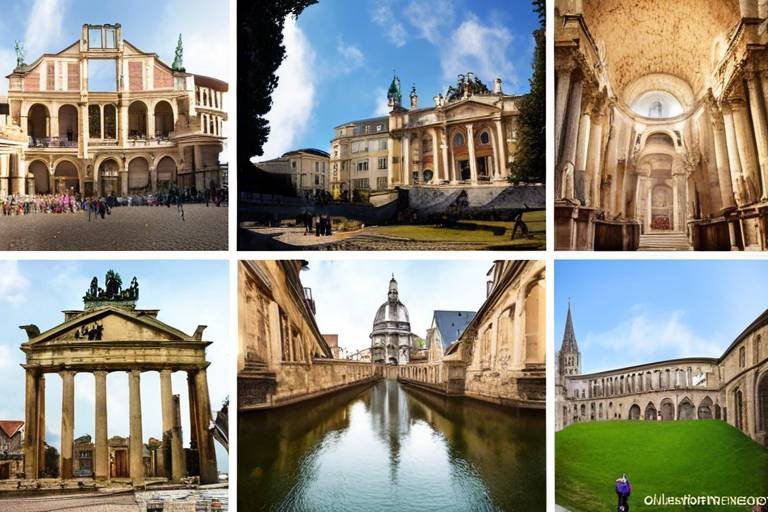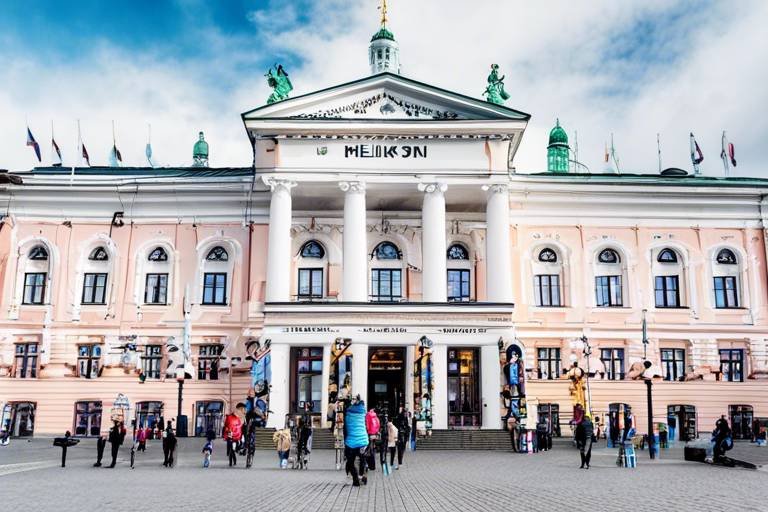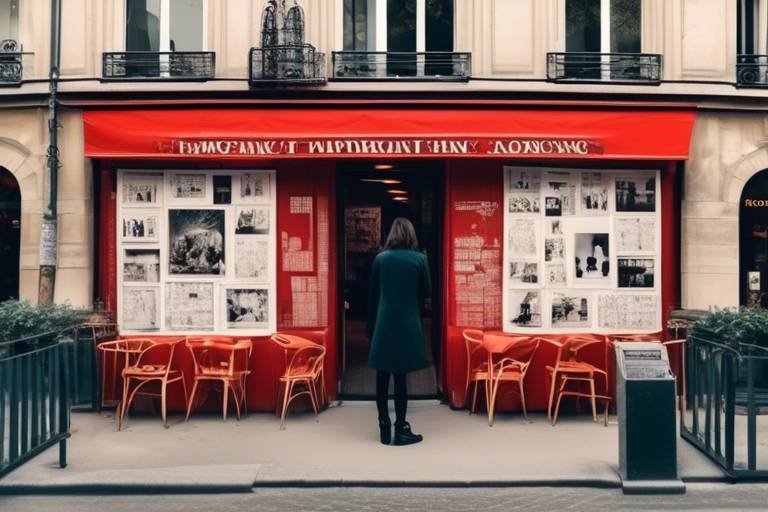Exploring the Best Historical Sites in Europe
Europe is a treasure trove of history, with each corner holding stories of ancient civilizations, medieval kingdoms, and cultural exchanges. Among the plethora of historical sites that dot the continent, some stand out for their significance, beauty, and ability to transport visitors back in time. These sites not only showcase the architectural prowess of bygone eras but also offer a glimpse into the daily lives and beliefs of the people who once inhabited these places.
One such iconic historical site is the Colosseum in Rome, a majestic amphitheater that witnessed gladiator battles and grand spectacles during the height of the Roman Empire. The massive structure, with its intricate arches and corridors, stands as a testament to the power and engineering prowess of ancient Rome.
Traveling to Athens, Greece, visitors can explore the Acropolis, a symbol of democracy and intellectual achievement. Dominated by the majestic Parthenon, dedicated to the goddess Athena, the Acropolis offers panoramic views of the city below, inviting visitors to contemplate the legacy of ancient Greek civilization.
Stepping onto the windswept plains of Stonehenge in England, one is immediately struck by the mystery and grandeur of this prehistoric monument. The arrangement of massive stone blocks in a circular formation has puzzled archaeologists and historians for centuries, sparking endless debates about its purpose and significance.
In Spain, the Alhambra stands as a testament to the cultural fusion of Moorish and Christian influences. The intricate Islamic architecture, lush gardens, and serene courtyards of this medieval palace complex offer a glimpse into the rich history of Andalusia and the enduring legacy of Al-Andalus.
France beckons with the Palace of Versailles, a symbol of opulence and grandeur during the reign of Louis XIV. The sprawling palace, adorned with lavish gardens and ornate interiors, reflects the artistic and architectural achievements of the French monarchy, drawing visitors into a world of luxury and extravagance.
Perched high above the city of Prague, Czech Republic, Prague Castle is a sprawling complex of historic buildings that has witnessed centuries of political intrigue and cultural exchange. The jewel of the castle, St. Vitus Cathedral, with its towering spires and intricate stained glass windows, is a masterpiece of Gothic architecture.
Traveling to Italy, one cannot miss the haunting ruins of Pompeii, frozen in time by the catastrophic eruption of Mount Vesuvius. Walking through the ancient streets of this Roman city, visitors can glimpse daily life, vibrant frescoes, and the tragic end of a thriving civilization.
Finally, in Germany, the Neuschwanstein Castle transports visitors into a fairytale realm of medieval legends and romanticism. Perched on a rugged hill in the Bavarian Alps, this picturesque castle inspired by Wagnerian operas captures the imagination and spirit of 19th-century Europe.
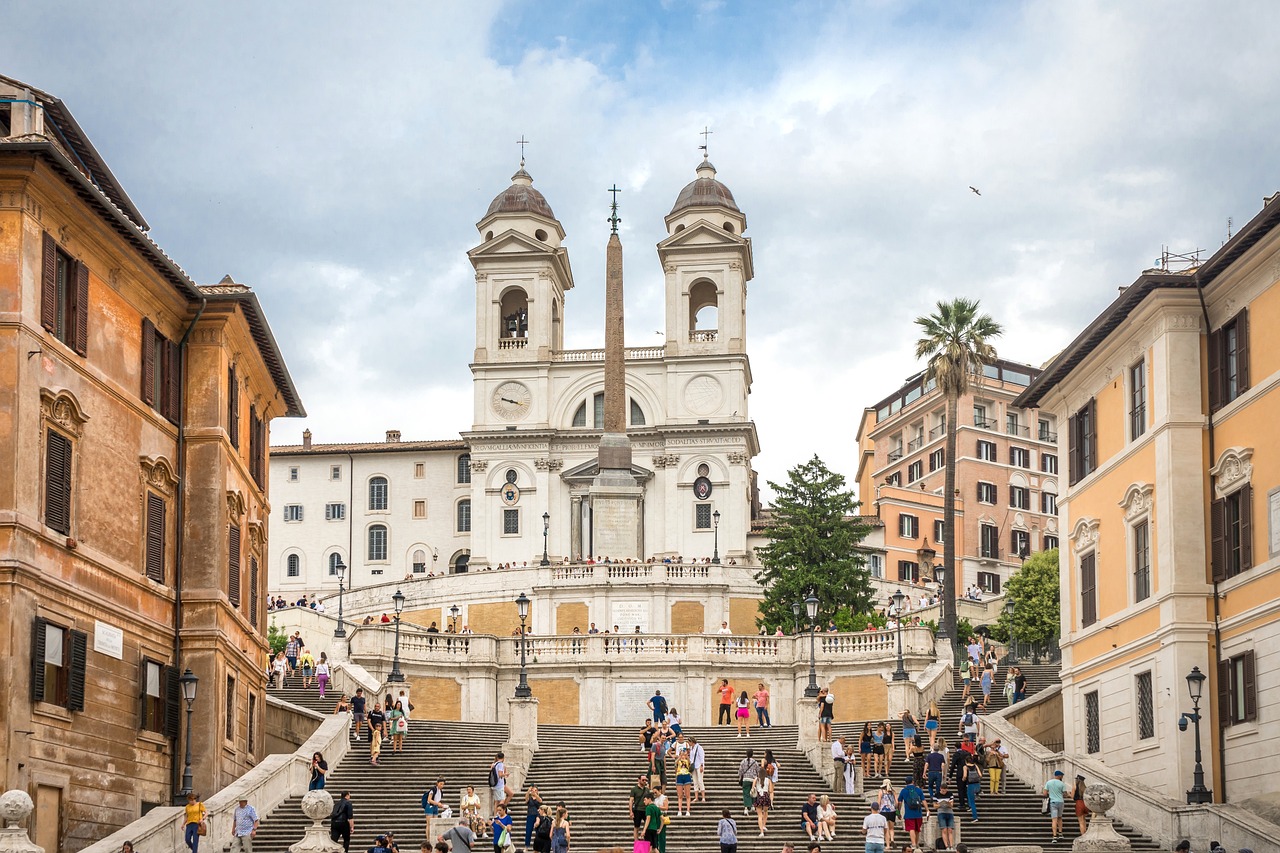
The Colosseum, Rome
The Colosseum in Rome stands as a magnificent testament to the grandeur and power of the ancient Roman Empire. This iconic amphitheater, also known as the Flavian Amphitheatre, once hosted exhilarating gladiator battles, mock sea battles, and other spectacles that enthralled the Roman populace. Built of concrete and sand, the Colosseum could hold up to 80,000 spectators, showcasing the architectural prowess of the Romans.
As you step inside the Colosseum, you can almost hear the echoes of the past, envisioning the cheers of the crowd and the clash of swords. The arena floor, once covered with sand to soak up the blood of combatants, sets the stage for the vivid reenactment of ancient battles. The underground chambers, where gladiators and wild animals awaited their turn in the arena, add a layer of mystery and intrigue to this historical marvel.
From the top tiers of the Colosseum, you can gaze upon the panoramic views of Rome, feeling a sense of awe at the architectural ingenuity that went into constructing such a colossal structure. The intricate network of corridors, seating sections, and arches reveals the meticulous planning and engineering skills of the ancient Romans, leaving visitors in admiration of their craftsmanship.
Imagine the roar of the crowd as gladiators faced off in fierce combat, the suspense palpable in the air. The Colosseum not only served as a venue for entertainment but also as a symbol of Roman supremacy and authority, showcasing the might of the empire to all who beheld its splendor. Today, this historic site stands as a reminder of a bygone era, inviting visitors to delve into the rich tapestry of Roman history and culture.
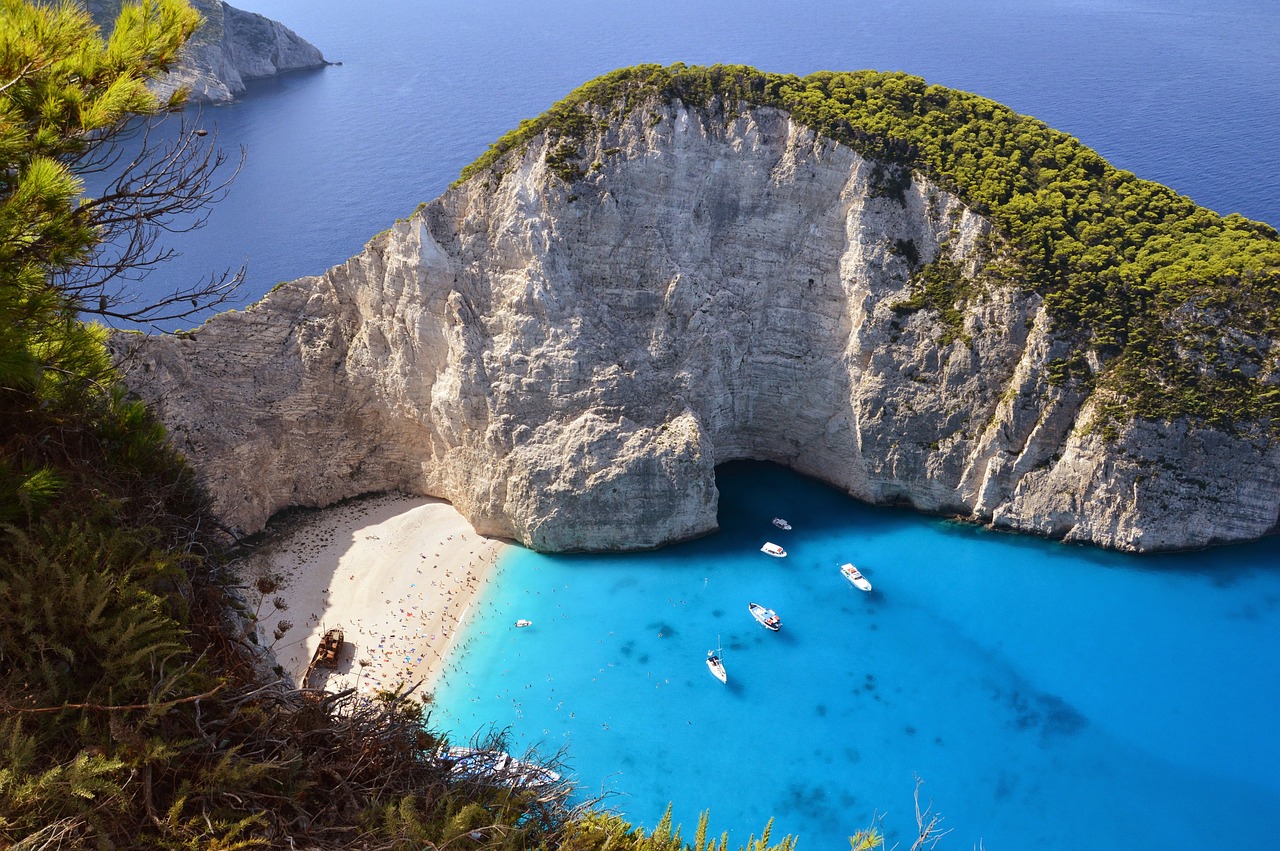
Acropolis of Athens, Greece
The Acropolis of Athens, Greece, stands as a testament to the ancient glory and architectural prowess of the Athenians. Perched high above the bustling city, this iconic site is crowned by the majestic Parthenon, dedicated to the goddess Athena, protector of the city. The Acropolis is a symbol of democracy and civilization, showcasing the rich history and cultural heritage of Greece.
As you ascend the sacred hill, you are greeted by the Propylaea, the monumental gateway to the Acropolis, offering a grand entrance to this historical marvel. Walking through the ruins, you can feel the weight of centuries of civilization, each stone whispering tales of triumph and tragedy.
The Erechtheion, with its iconic Caryatid Porch, is a masterpiece of ancient Greek architecture, showcasing the artistic and engineering skills of the time. The Temple of Athena Nike, dedicated to the goddess of victory, stands as a reminder of the Athenian prowess in war and wisdom.
From the Acropolis, the panoramic view of Athens is breathtaking, allowing you to appreciate the blend of ancient ruins with the modern cityscape. The sacred rock of the Acropolis has witnessed the rise and fall of civilizations, making it a timeless symbol of human achievement and endurance.
Visiting the Acropolis is like stepping into a time machine, where every stone tells a story and every column echoes the voices of the past. It is a journey through history, art, and philosophy, offering a glimpse into the soul of ancient Greece and the birth of Western civilization.
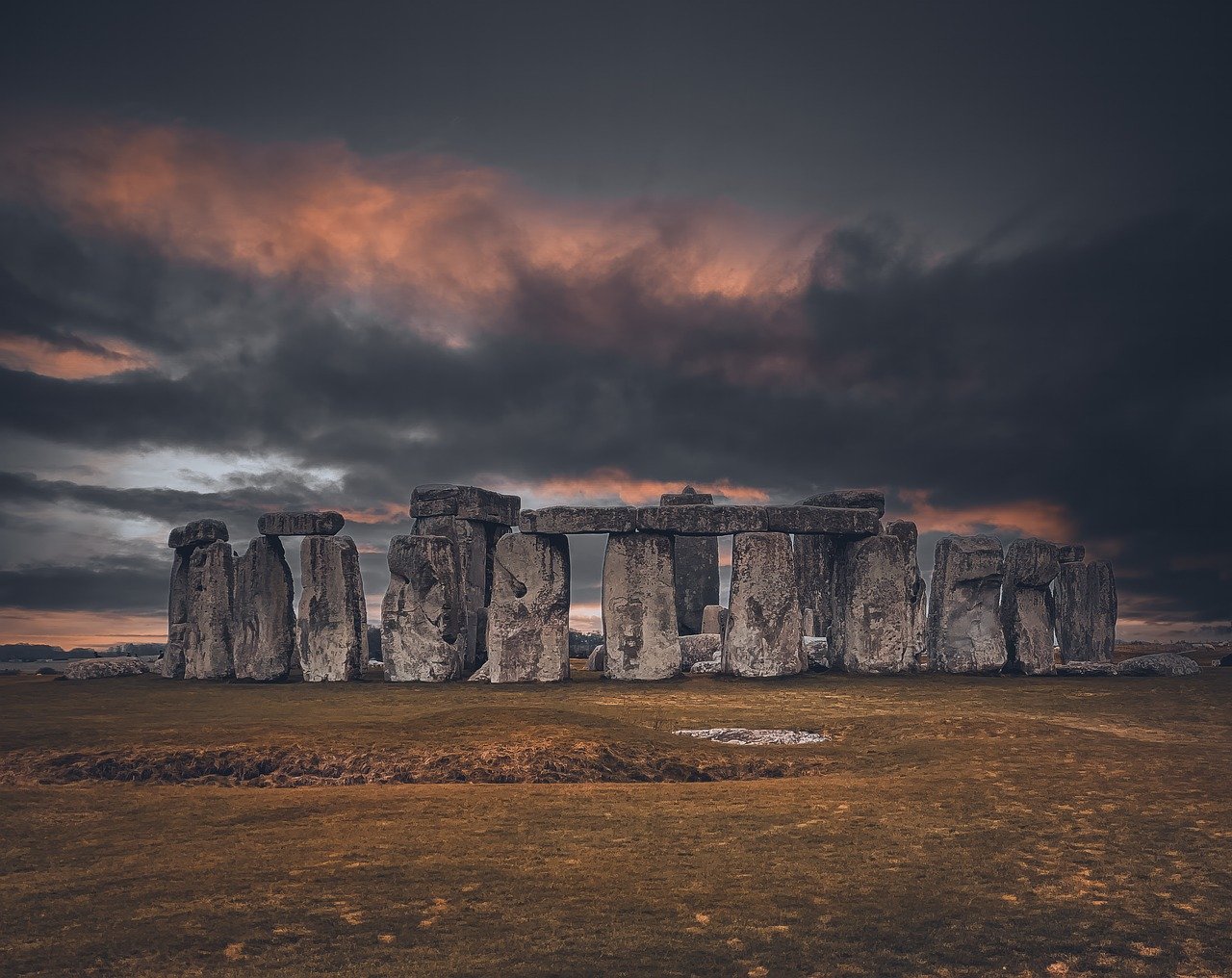
Stonehenge, England
Located in the English countryside, Stonehenge stands as a mesmerizing enigma, captivating visitors with its ancient mystery and monumental presence. This prehistoric site, dating back over 4,000 years, continues to baffle historians and archaeologists with its purpose and construction. The iconic stone circle, comprised of massive megaliths arranged in a circular formation, evokes a sense of awe and wonder, drawing in curious minds from around the world.
Stepping into the realm of Stonehenge is akin to stepping into a time portal, where the whispers of the past echo through the windswept plains. Theories abound regarding the origin and significance of this enigmatic monument, ranging from astronomical observatory to religious temple. The sheer scale and precision of the stones' alignment hint at a sophisticated understanding of celestial movements and spiritual beliefs held by its creators.
Visitors to Stonehenge are greeted not only by the imposing stones themselves but also by the surrounding landscape steeped in history. The vast Salisbury Plain provides a dramatic backdrop to this ancient site, enhancing the sense of mystique and reverence that permeates the air. Walking among the towering stones, one can't help but feel a connection to the distant past, where rituals, ceremonies, and gatherings once took place within this sacred space.
As the sun sets over the horizon, casting a golden hue upon the weathered stones, Stonehenge takes on a mystical allure, stirring the imagination and igniting a sense of wonder. Each visit to this legendary site unveils new layers of its enigmatic charm, inviting contemplation and sparking curiosity about the secrets it holds within its ancient embrace.
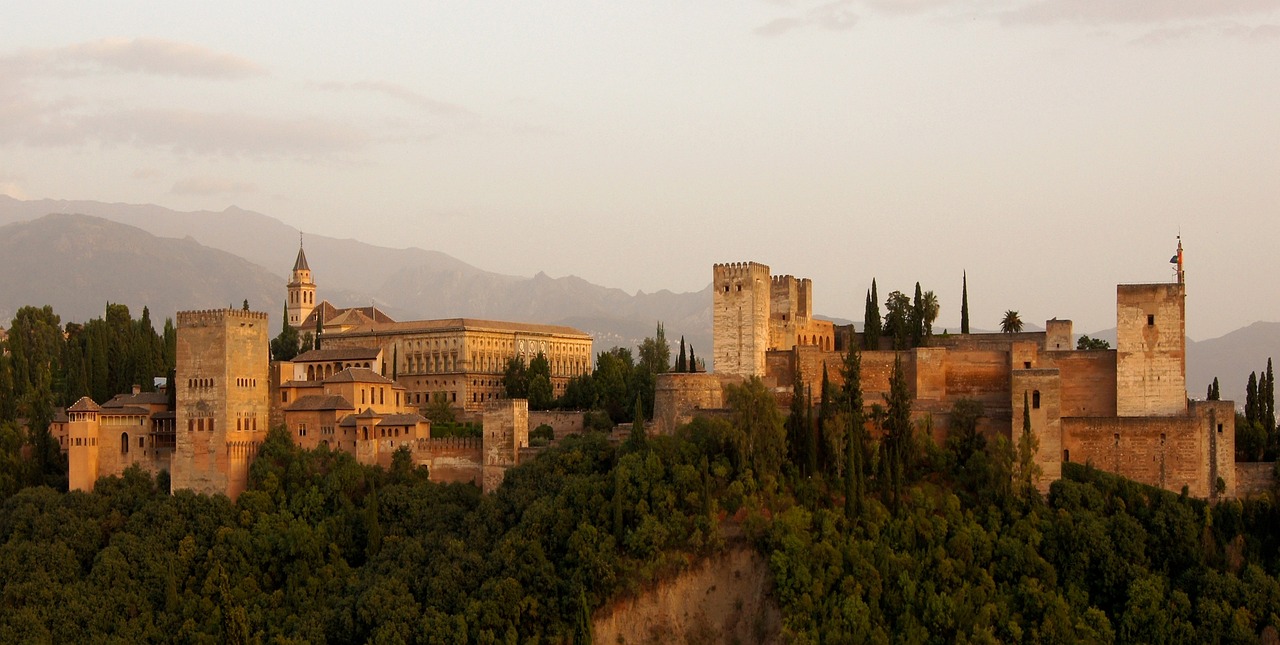
Alhambra, Spain
The Alhambra in Spain is a mesmerizing historical site that beautifully blends Islamic architecture with lush gardens, creating a unique and captivating experience for visitors. This medieval palace complex showcases the intricate craftsmanship and cultural fusion of Moorish and Christian influences in Spain. As you wander through its ornate halls and courtyards, you can feel the echoes of centuries past, immersing yourself in the rich history of the region.
One of the standout features of the Alhambra is its stunning Nasrid Palaces, adorned with intricate stucco work, colorful tiles, and delicate filigree carvings that showcase the skill and artistry of the craftsmen who built them. The Generalife Gardens, with their lush greenery, tranquil water features, and panoramic views of the surrounding landscape, offer a peaceful retreat within the bustling city of Granada.
Visitors to the Alhambra can also explore the Alcazaba, the fortress that once protected the complex, providing strategic views of the city below. The Court of the Lions, with its iconic fountain surrounded by intricately carved marble columns, is a testament to the architectural beauty and ingenuity of the Islamic era in Spain.
Steeped in history and architectural splendor, the Alhambra is a must-visit destination for history enthusiasts, art lovers, and anyone seeking to immerse themselves in the cultural heritage of Spain. Its intricate details, serene gardens, and panoramic views make it a truly unforgettable experience that transports visitors back in time to a bygone era of opulence and elegance.
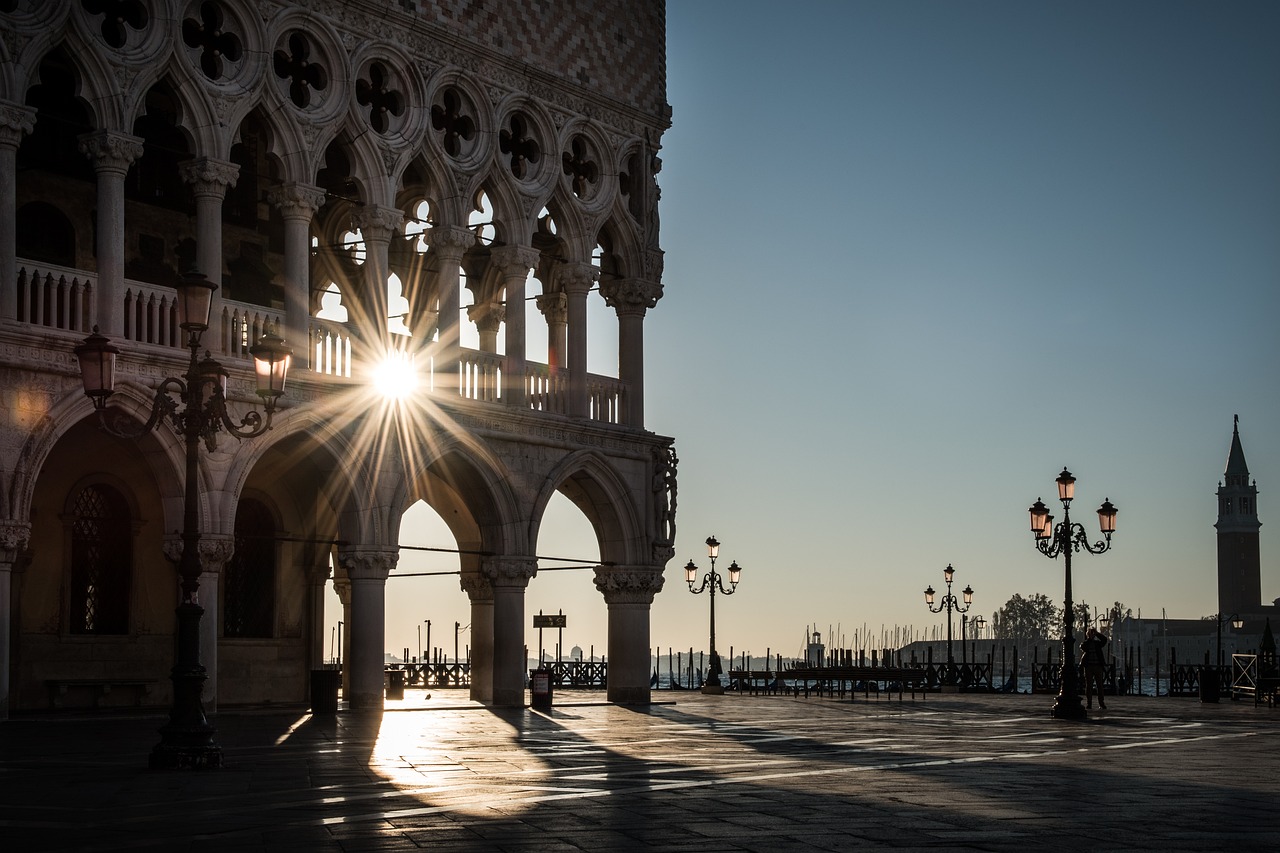
Palace of Versailles, France
The Palace of Versailles in France is a true marvel of opulence and grandeur, reflecting the extravagant tastes of French royalty. This magnificent palace, located just outside of Paris, holds a rich history dating back to the reign of Louis XIV, also known as the Sun King. The palace is renowned for its lavish gardens, ornate interiors, and historical significance in shaping the course of French history.
Walking through the halls of the Palace of Versailles is like stepping into a time machine that transports you to the era of absolute monarchy in France. The intricate details of the architecture, the exquisite decorations, and the vast scale of the palace all serve as a testament to the power and influence of the French monarchy during the 17th and 18th centuries.
One of the most iconic features of the Palace of Versailles is the Hall of Mirrors, a breathtaking gallery adorned with 357 mirrors that reflect the light from the palace's windows, creating a dazzling display of opulence. This hall served as a venue for important events and ceremonies, including royal receptions and diplomatic meetings, further solidifying its place in history.
Surrounding the palace is the expansive Gardens of Versailles, a masterpiece of landscape design featuring meticulously manicured lawns, grand fountains, and symmetrical patterns that showcase the French art of gardening. The gardens provide a tranquil escape from the grandeur of the palace, inviting visitors to stroll along the tree-lined paths and admire the beauty of nature.
Visiting the Palace of Versailles offers a glimpse into the world of French royalty and the extravagant lifestyle they led. From the Hall of Mirrors to the vast gardens, every corner of the palace tells a story of wealth, power, and artistic achievement. It is a must-see destination for anyone interested in history, architecture, and the grandeur of royal palaces.
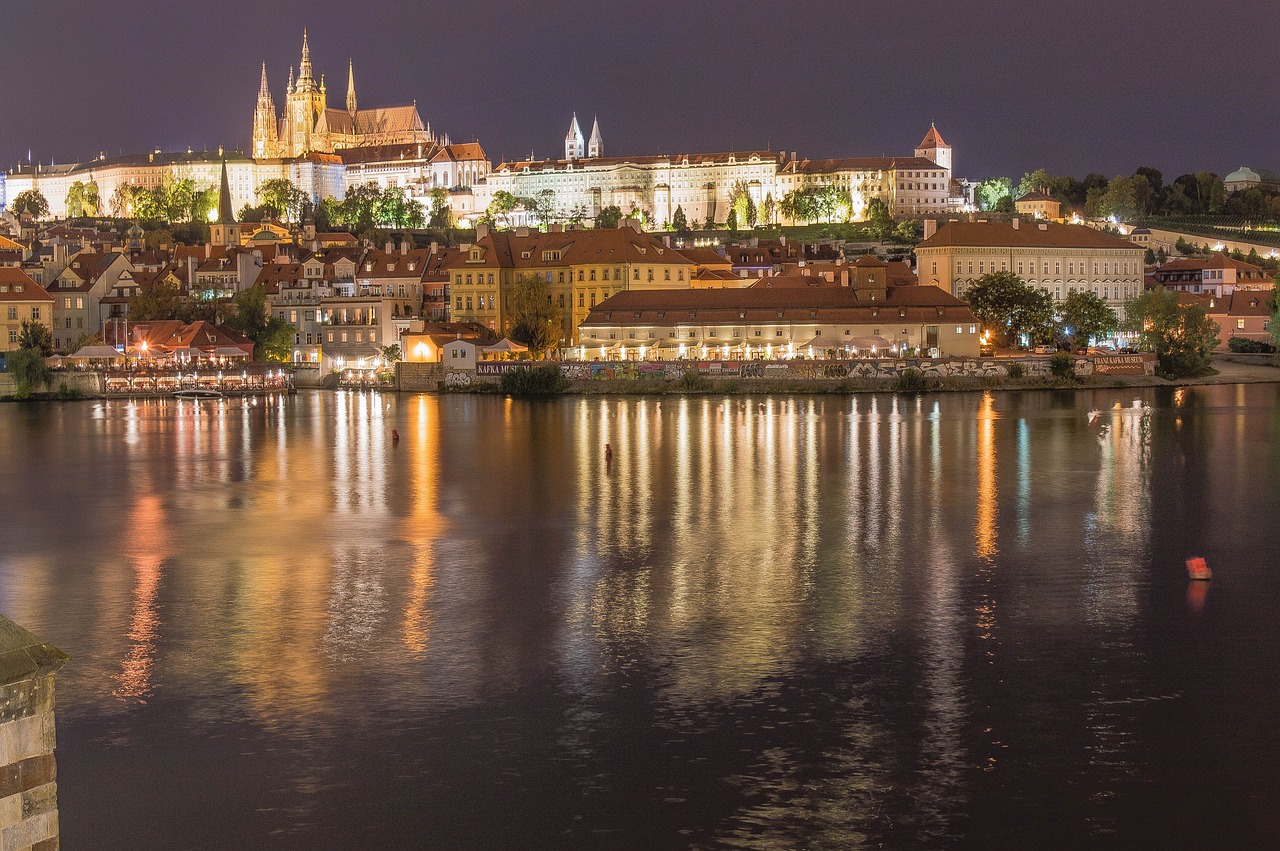
Prague Castle, Czech Republic
Located in the heart of Prague, the Prague Castle stands as a symbol of Czech history and architectural marvel. This sprawling castle complex, dating back to the 9th century, is not just a single structure but a collection of palaces, churches, gardens, and towers that offer a glimpse into centuries of Czech royalty and culture.
One of the most iconic buildings within the Prague Castle complex is the stunning St. Vitus Cathedral, a masterpiece of Gothic architecture that dominates the skyline of the city. Its intricate facade and towering spires showcase the craftsmanship and artistry of medieval builders, drawing visitors in with its grandeur and beauty.
As you wander through the castle grounds, you'll encounter the Old Royal Palace, where Czech kings once held court, and the picturesque Golden Lane, a row of colorful houses that once housed castle guards and artisans. Each building within the complex tells a story of the past, from the opulent living quarters of royalty to the humble dwellings of commoners.
From the castle's ramparts, you can enjoy panoramic views of Prague's red-roofed skyline and the meandering Vltava River below. The strategic location of the castle atop a hill not only provided defense in ancient times but also offers visitors a breathtaking vantage point to appreciate the beauty of the city and its surroundings.
Visiting Prague Castle is like stepping back in time, immersing yourself in the rich tapestry of Czech history and culture. Whether you're fascinated by medieval architecture, intrigued by royal dynasties, or simply seeking a peaceful retreat from the bustling city below, this historical site has something to offer every visitor.
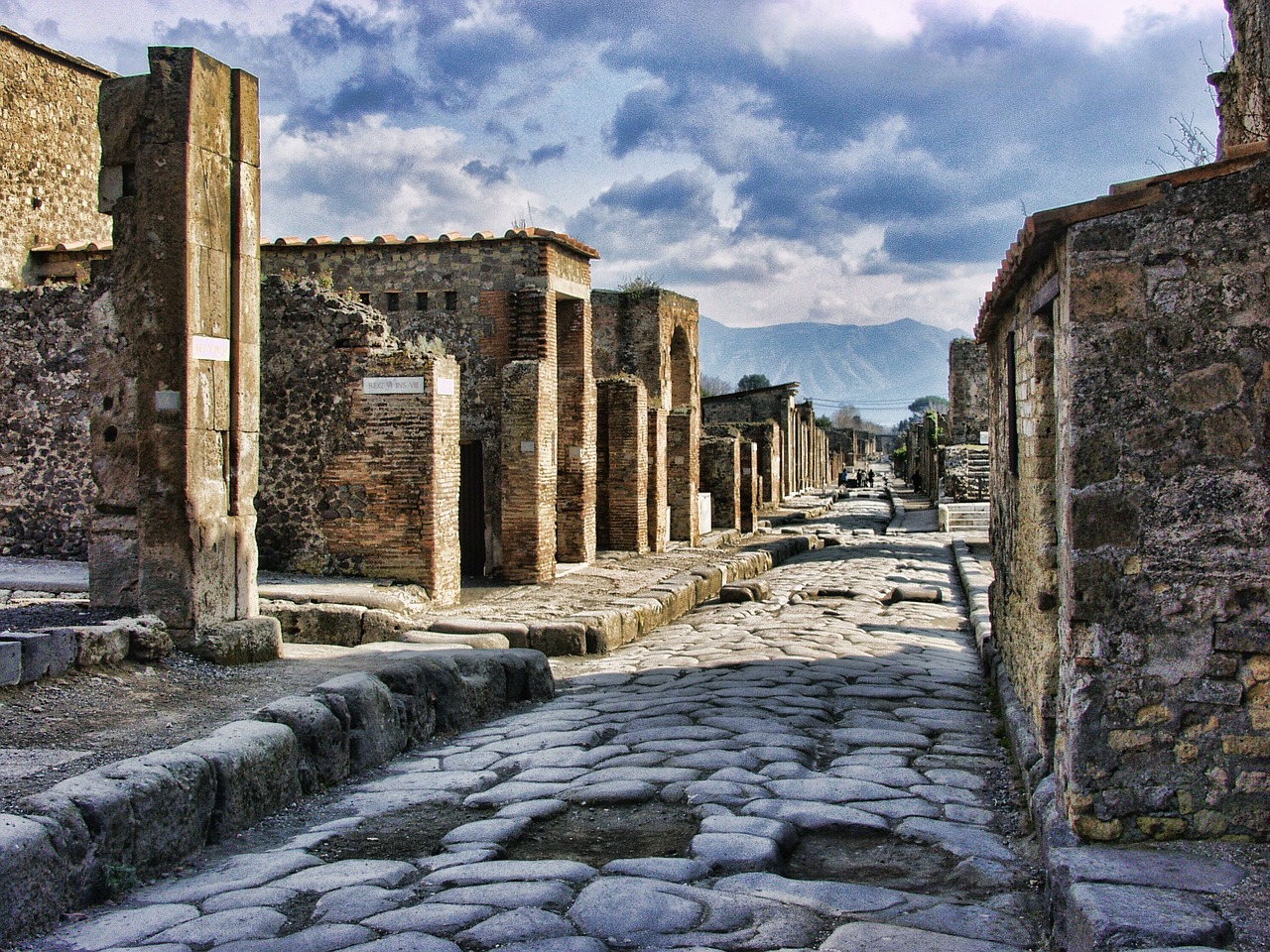
Pompeii, Italy
Located near the Bay of Naples in southern Italy, Pompeii stands as a haunting reminder of the catastrophic eruption of Mount Vesuvius in 79 AD. This ancient Roman city was buried under layers of volcanic ash and pumice, preserving its buildings, streets, and artifacts for centuries.
Walking through the ruins of Pompeii is like stepping back in time, offering a rare glimpse into the daily life and culture of an ancient civilization. The well-preserved frescoes, mosaics, and architecture provide valuable insights into Roman art, architecture, and urban planning.
One of the most striking features of Pompeii is the Forum, the heart of the city's political, religious, and social life. Here, visitors can see the remains of temples, basilicas, and public buildings that once bustled with activity.
The amphitheater of Pompeii, one of the oldest surviving Roman amphitheaters, is another highlight of the site. This arena hosted gladiator contests, animal hunts, and other spectacles, showcasing the entertainment preferences of the ancient Romans.
Visitors to Pompeii can also explore the well-preserved homes of the city's wealthier residents, complete with intricate frescoes, marble decorations, and private courtyards. These houses offer a glimpse into the luxurious lifestyle enjoyed by the elite of Pompeii.
As you wander through the streets of Pompeii, you can imagine the bustling city it once was, with shops, taverns, and public baths lining the cobblestone roads. The plaster casts of the volcano's victims serve as a poignant reminder of the human tragedy that unfolded during the eruption.
In addition to its historical significance, Pompeii also offers stunning views of Mount Vesuvius, the very volcano that buried the city in ash. This juxtaposition of ancient ruins against the backdrop of a dormant volcano creates a dramatic and unforgettable experience for visitors.
Overall, a visit to Pompeii is a journey through time, allowing visitors to witness firsthand the devastating impact of natural disasters on human civilization and the enduring legacy of an ancient city frozen in time.
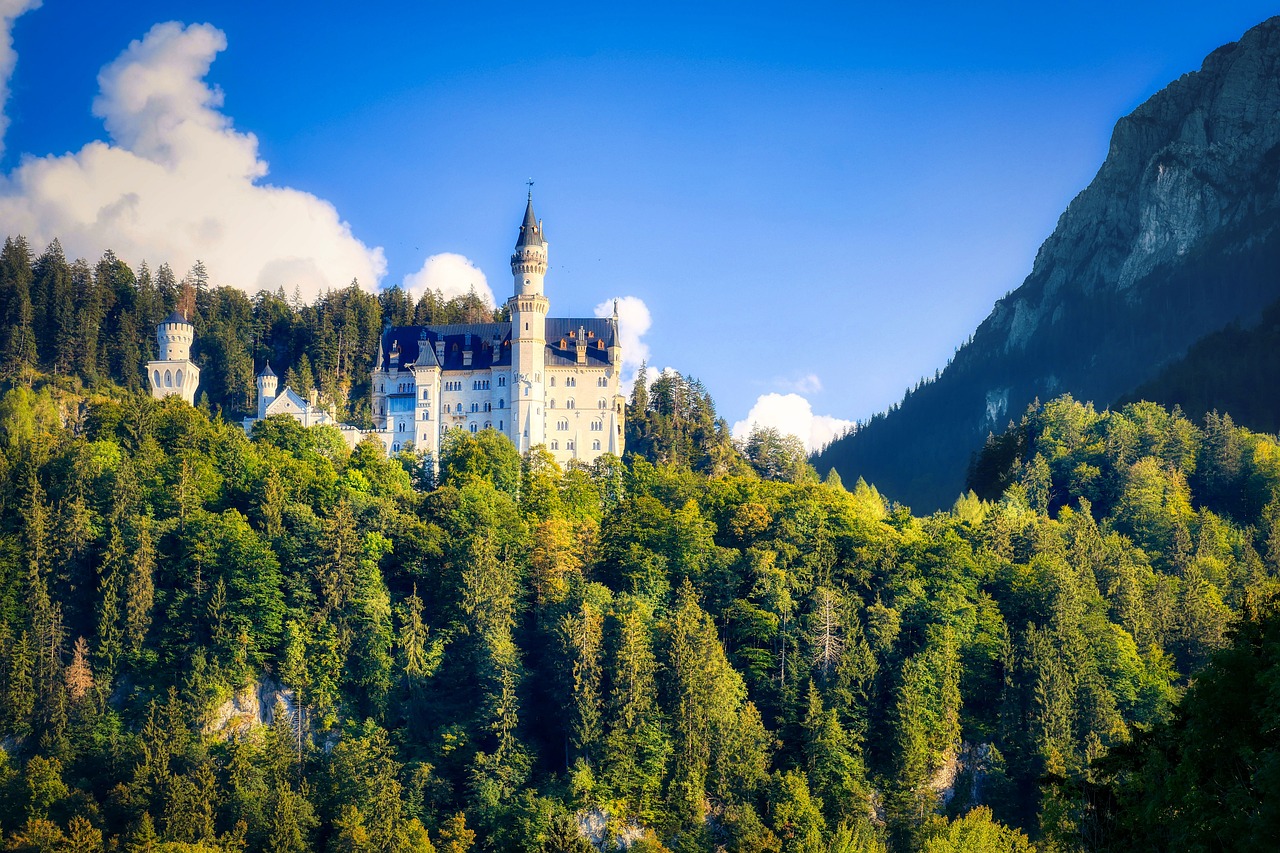
Neuschwanstein Castle, Germany
Neuschwanstein Castle, located in Germany, is a magnificent architectural gem that embodies the romantic spirit of 19th-century Europe. Inspired by medieval legends and fairytales, this picturesque castle sits perched on a rugged hill in the Bavarian Alps, offering a breathtaking view of the surrounding landscape.
The construction of Neuschwanstein Castle was commissioned by King Ludwig II of Bavaria in the late 19th century. The king's vision was to create a retreat that would reflect the romantic ideals of chivalry and medieval lore. The result is a stunning example of neo-Romanesque architecture, with ornate turrets, spires, and intricate detailing that transport visitors to a bygone era.
Visitors to Neuschwanstein Castle can explore the interior rooms, which are lavishly decorated with elaborate frescoes, intricate woodcarvings, and opulent furnishings fit for a king. Each room tells a story, showcasing the king's love for art, music, and literature.
One of the most iconic features of Neuschwanstein Castle is the view it offers of the surrounding landscape. From the castle's vantage point, visitors can admire the sweeping vistas of the Bavarian countryside, with the Alps in the distance creating a stunning backdrop for this fairytale castle.
Surrounded by lush forests and nestled amidst the natural beauty of the Bavarian region, Neuschwanstein Castle is a popular destination for tourists seeking to experience a piece of history and immerse themselves in the romantic allure of a bygone era.
Frequently Asked Questions
- What is the best time of year to visit these historical sites in Europe?
The best time to visit these historical sites in Europe is during the shoulder seasons of spring (April to June) and fall (September to October) when the weather is mild, the crowds are smaller, and the attractions are less crowded.
- Are guided tours available at these historical sites?
Yes, guided tours are often available at these historical sites, providing visitors with in-depth knowledge and insights into the history, architecture, and significance of each location. It's recommended to book tours in advance to ensure availability.
- Are these historical sites wheelchair accessible?
Accessibility varies at each historical site, but efforts have been made to make many of them wheelchair accessible. It's advisable to check with the specific site or tour operator for detailed information on accessibility options and facilities.
- Can I take photos at these historical sites?
Photography policies vary at each historical site, but in general, personal photography for non-commercial use is allowed. However, some sites may have restrictions on the use of tripods or flash photography. It's always best to check with the site's guidelines before taking photos.

